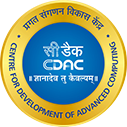World AIDS day
World AIDS Day is celebrated around the world on December 1st each year since 1988. It has become one of the most recognized international health days and a key opportunity to raise awareness, commemorate those who have passed on, and celebrate victories, such as increased access to treatment and prevention services.

Global HIV Statistics
- 39 million [33.1 million–45.7 million] people globally were living with HIV in 2022.
- 1.3 million [1 million–1.7 million] people became newly infected with HIV in 2022.
- 630 000 [480 000–880 000] people died from AIDS-related illnesses in 2022.
- 29.8 million people were accessing antiretroviral therapy in 2022.
- 85.6 million [64.8 million–113.0 million] people have become infected with HIV and 40.4 million [32.9 million–51.3 million] people have died from AIDS-related illnesses since the start of the epidemic.
To know more, click here.
India - HIV statistics
As per the Sankalp - Status of National AIDS Response report (2022) of the Government,
- At the national level, estimated adult HIV prevalence (15-49 years) has declined, where prevalence was estimated at 0.55% in 2000, through to 0.32% in 2010, and 0.21% in 2021.
- The number of People Living with HIV (PLHIV) are estimated at around 24 lakhs.
- Annual New Infection (ANI) are estimated at 62.97 thousand in 2021 in India. There is an estimated 46.3% decline in ANI at national level from 2010-2021.
- The north-east region States have the highest adult HIV prevalence (2.70% in Mizoram, 1.36% in Nagaland and 1.05% in Manipur), followed by southern States (0.67% in Andhra Pradesh, 0.47% in Telangana and 0.46% in Karnataka). Southern States have the largest number of PLHIV viz. Maharashtra, Andhra Pradesh and Karnataka being the top three.
- AIDS Related Deaths (ARD) are estimated at 41.97 thousand in 2021 in India. A decline of 76.5% in ARD has been estimated at national level from 2010-21. The declining trend is noted in all States/UTs excluding Puducherry, Arunachal Pradesh, Meghalaya, and Tripura. The highest decline in ARD is estimated in Chandigarh, Telangana, and West Bengal.
- PMTCT need are estimated at 20,612 in 2021 in India. Top 3 states accounting for the highest need are Maharashtra (12.9%), Bihar (11.9%) and Uttar Pradesh (10.6%).
To know more, click here.
2023 Theme: Let communities lead
The world can end AIDS, with communities leading the way. Organisations of communities living with, at risk of, or affected by HIV are the frontline of progress in the HIV response. Communities connect people with person-centred public health services, build trust, innovate, monitor implementation of policies and services, and hold providers accountable.
But communities are being held back in their leadership. Funding shortages, policy and regulatory hurdles, capacity constraints, and crackdowns on civil society and on the human rights of marginalised communities, are obstructing the progress of HIV prevention and treatment services. If these obstacles are removed, community-led organisations can add even greater impetus to the global HIV response, advancing progress towards the end of AIDS.
This World AIDS Day is more than a celebration of the achievements of communities; it is a call to action to enable and support communities in their leadership roles.
Let Communities Lead - World AIDS Day Report 2023
Source : UN
Last Modified : 12/6/2023
This topic provides information about Affordable a...
This topic provides information about antibiotic r...
This topic provides information related to Nationa...
This topic explains about various Sexually Transmi...
